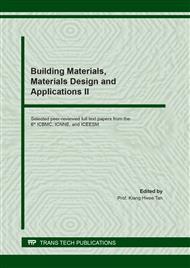p.3
p.13
p.21
p.29
p.39
p.45
p.53
p.61
A Solar Assistant Dehumidifier Based on Porous Metal-Organic Framework
Abstract:
As an important factor to measure environmental comfort, humidity control is very important. However, previous dehumidification methods have many defects, such as condensation and adsorbents, which often require a lot of energy. The growing requirements of an indoor environment can stem from the development of living levels and technology. Humidity, as an important factor to measure environmental comfort, affects living and production, and indoor humidity control is an indispensable part of modern architecture. However, there are many defects in the previous dehumidification methods, such as condensation dehumidification, which often requires a lot of energy. Traditional adsorbents (such as zeolite silica and activated alumina) have problems with fragile structures or high regeneration temperatures. In this paper, an indoor dehumidification device based on the porous metal-organic framework {MOF-801, Zr6O4(OH)4(Fumarate)6}, can realize the indoor dehumidification process only by using a small amount of solar energy (1 kilowatt per square meter). The device is expected to remove 0.2113 kg/h of moisture per square meter MOF-801, only needs a few additional energy inputs.
Info:
Periodical:
Pages:
13-20
Citation:
Online since:
August 2021
Authors:
Price:
Сopyright:
© 2021 Trans Tech Publications Ltd. All Rights Reserved
Share:
Citation:


